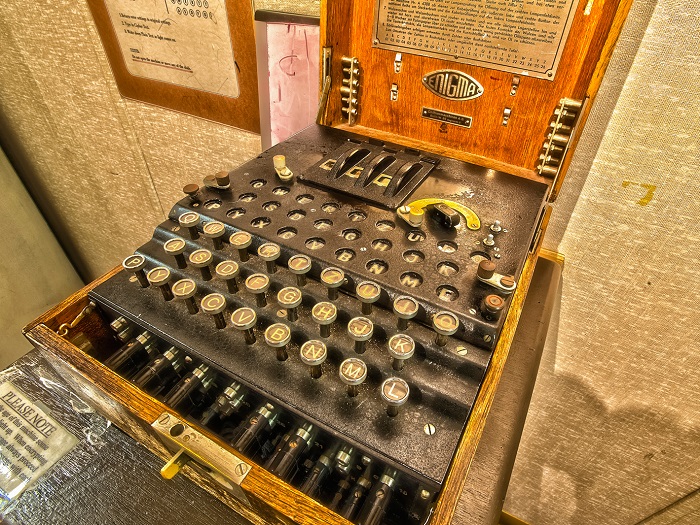Enigma…Sigsaly…Cryptanalytic Bombe…If you recognize these terms, then you’ve probably read lots of spy novel—or you’re employed in our nation’s defense. Either way, you can actually see these historic code-making and code-breaking devices at the National Cryptologic Museum. This absolutely fascinating museum is located adjacent to the National Security Agency headquarters at Fort Meade, right here in Anne Arundel County, Maryland.

Cryptology is the study of codes, ciphers, and other forms of secret writing. The museum’s intriguing exhibits span decades of United States history, giving the visitor a hands-on look at real life encryption and decryption techniques. There are hundreds of machines and devices, many displayed alongside explanatory replica scenes and models. The simple written descriptions shy away from words such as “spy” and “secrets” in favor of captions about “systems” and “information.”

The tone of authenticity and relevance is set as you drive up, passing near the highly secure gates of the NSA. You’ll soon learn that the NSA’s work to protect the American people, institutions, and way of life generally fall into two categories: Signals Intelligence (SIGINT) and Information Assurance.
Signals Intelligence efforts collect, process, translate, and share all kinds of foreign signals, such as radio, satellite, and cell phone transmissions, The information gathered is shared with U.S. officials and war fighters to help determine where our adversaries are, what they are planning, and what kinds of weapons they have.

The signals collected are often encrypted and not in English. NSA has teams of mathematicians, linguists, analysts, and computer scientists working around the clock with the latest technology to turn signals into useable intelligence. Various museum rooms are devoted to SIGINT in the time of every American conflict, including the Civil War, the Korean War, World War I, World War II, the Cold War, and the Vietnam War.
The museum devotes a large room to Information Assurance. Here you will learn that hostile foreign agents and nations are constantly trying to gather information about U.S. plans and capabilities by exploiting our communications, information systems, and networks. Each day there are more than three million unauthorized probes of U.S. Defense Department computer networks alone. NSA Information Assurance teams work with our government agencies and allies to keep American systems and information secure from adversaries.

All of this intelligence requires almost unfathomable computer capabilities. On display are some of the early computers from the 1960s through the 1990s. These include the giant Cray computers, which were then the best available technology. It’s amusing to compare these huge, clunky early devices with the sleek phones and tablets we carry around in our pockets today.

Clever inventions, decoding machines, marked-up maps, old photographs, and original letters are everywhere among the displays. The array includes detailed exhibits about Women in American Cryptology, the African American Experience, and American Hobo communication. There are multiple Enigma machines, Japanese Jade and Purple encryption machines, a mock-up of a World War I Radio Intercept Site in France, a rare antique books collection, and lots of other unique items. The smallest details are thorough--a replica of the Rosetta Stone appears in a display about cryptologic language analysis and a GI-Joe-like doll speaks Navajo to inform children about Native American World War II Code Talkers.
The exhibits include formerly state-of-the-art cryptology gear, but overall the museum is more up close and personal than high tech. The displays give far more credit to individual innovators than to machines.

The entry Memorial Hall offers tribute to pioneers and heroes in the once silent world of cryptology. It includes a replica of the Cryptologic Memorial honoring 176 cryptologists who have given their lives in the line of duty since 1950. A display entitled Service and Sacrifice highlights historical events in which service members operating in silence as cryptologists endured great peril and in many cases gave their lives.
Spend a few hours browsing, and you’ll come away with a better understanding of the NSA’s role and the ways in which cryptology and intelligence have saved lives. The spirit of the Museum makes it clear that real successes are won by military and diplomatic personnel, while NSA remains in the background to help the defenders to be in the right place at the right time with the right information.

The free public museum is easy to find and convenient to drive to, offering plenty of adjoining free parking, no stairs, no crowds, and a very accessible human scale. The super friendly and knowledgeable staff welcome you with a museum floor plan, suggesting the audio tour, research library, gift shop, and video viewing room. And there are lots of hands-on activities for kids—think “Crypto Cat” and “Decipher Dog.” Hours are Monday through Friday from 9:00 to 4:00pm (except on Federal holidays), as well as some Saturdays.
Information is power, the NSA tells us, and when we know our adversaries' information and they don't know ours, we have the "information advantage." If you like decoding secrets, then check out this museum at https://www.nsa.gov/about/cryptologic-heritage/museum.
Photos courtesy of nsa.gov








